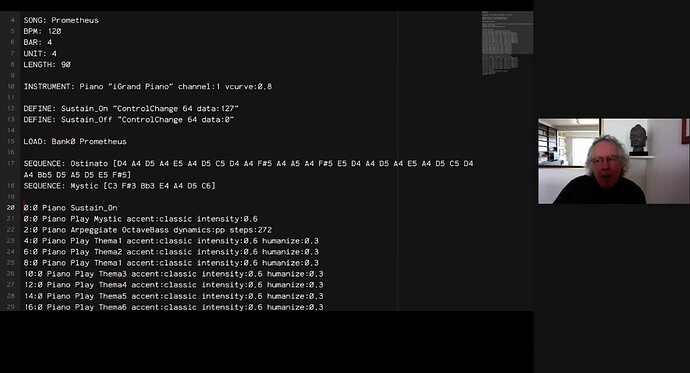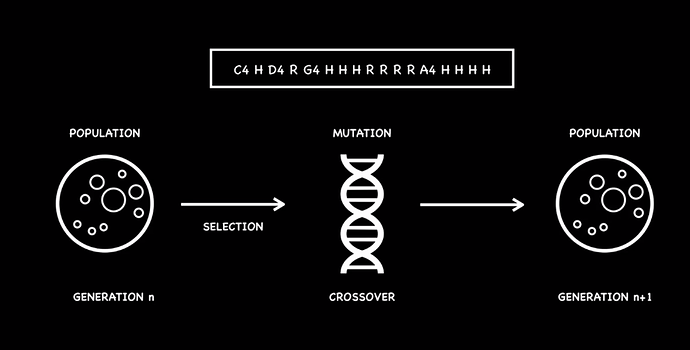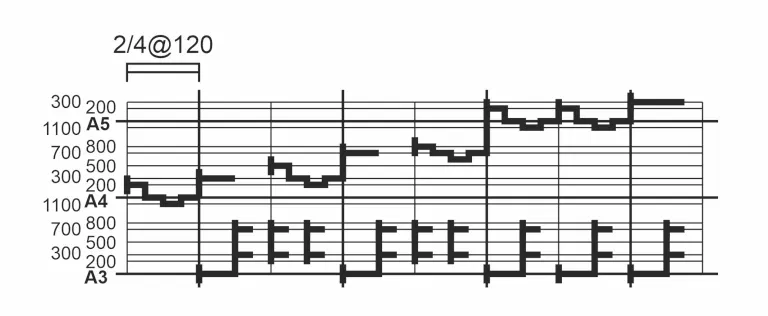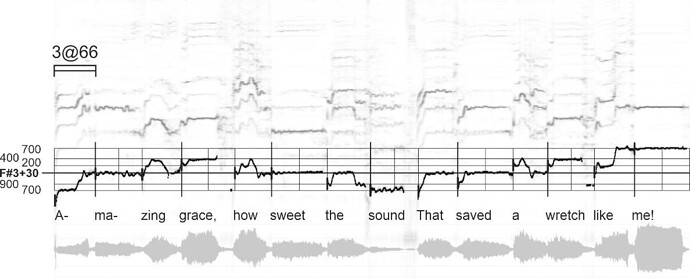Another thread, this one for collecting references and links around ways of notating algorithmic patterns, and the following discussions.
One to kick things off, that I’m looking forward to reading:
On Turtles and Dragons and the dangerous quest for a media art notation system
Tim Boykett, Marta Peirano, Simone Boria, Heather Kelley, Elisabeth
Schimana, Andreas Dekrout. Rachel OReilly
Newcastle notation for clog dancing
Hi all,
I just attended a conference where I heard a talk by Jean Claude Heudin presenting his works in AI / musical composition : https://www.jcheudin.fr/
He mentioned his approach to notation, cellular automata and his interest for genetics, so I thought I’d add the reference here if anyone wants to find out more. Here’s a screenshot of the notation from his ANGELIA electronic music AI.
Another screenshot illustrating one of the models:
Yet another one illustrating the use of feedback loops:
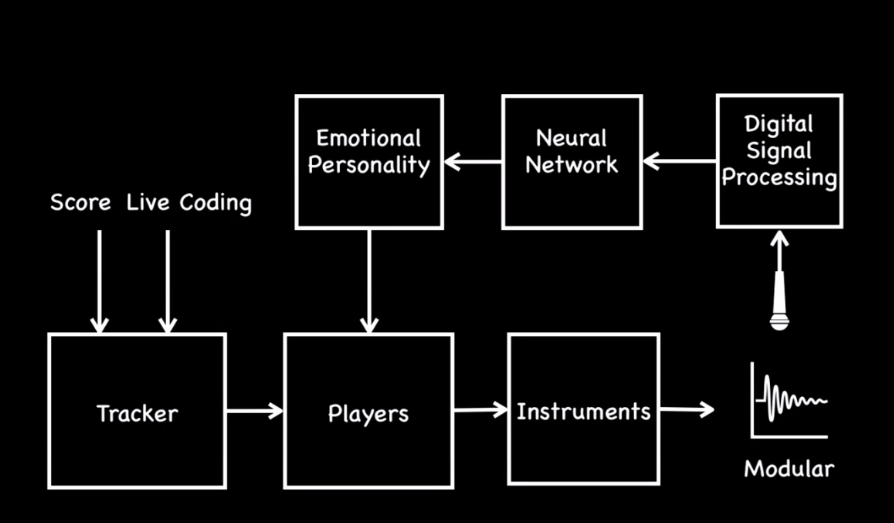
One on rhythm notation:
Liu, Yang, and Godfried T. Toussaint. ‘Mathematical Notation, Representation, and Visualization of Musical Rhythm: A Comparative Perspective’. International Journal of Machine Learning and Computing, 2012, 261–65. http://www.ijmlc.org/papers/127-I024.pdf
This video by WTF Grooves on Alternative (rhytmic) Notation made me think of Netsup, a smart markup language that comes with a nice web interface. They share the idea of creating tuplets from numbers.
I just wanted to share this great collection of quotes and links about “Notation and thought”:
I’m also blowing my mind reading about Laban’s effort graphs, but will likely post about that separately…
I’m focusing my doctorate research to study the relations between geometric simmetry and algorithmic pattern (as proposed in your 2020 NIME paper) and I found this and the last reference intriguing. My feel, which I think is shared around here, is that the representational, semiotic and notational aspects of both natural and programming lenguages play a fundamental aspect in creativity, particularly in music.
Of course the idea is not new, as could be found in the famous Wittgenstein quote “the limits of my lenguage are the limits of my thought”. Arguably whats new is our context and the posibility of actualizing the idea.
On the other hand is weird for me that you mention Laban. A friend used his theory of movement for his thesis on “transmedial gestures”. I recently stumbled upon the idea again, while thinking of rhythm as an interface or bond between the spacial and temporal dimension. Would keep researching and post some thoughts or a reading proposal on the matter (would love to participate in a thread to read and discuss Laban effort graphs as well). Thanks for this awesome forum and ideas.
Thinking about notation in the context of this quote:
This procedure is expressed as a geometric construction, here we’ve expressed the procedure geometrically. When writing in code we’re expressing the procedure algebraically. Geometry and algebra are these two different ways we have of modeling the world these two different ways we have of understanding mathematics, and throughout the history of mathematics one or the other has kind of been in fashion, it’s flopped back and forth. David Hestenes points out that the reason that we have these two different ways of understanding mathematics algebra and geometry is that they correspond to two different facilities in the human mind: algebra runs on our language facilities, geometry runs on our visual perception facilities, our spatial perception. These are both very powerful facilities, we use both of them all the time for all sorts of things, but I think that if we’re if we’re trying to find a mathematical framework for visual artists to create visual art, which is what this is, I think it needs to be grounded in the visual mathematics, which is geometry not algebra. That’s the more precise reason why I think code is an inappropriate way of creating visual art: code is algebraic, we think linguistically when we’re coding, great art has always been created by thinking visually, and so I think we need a more geometric approach.
Bret Victor - Stop Drawing Dead Fish – 2012 – 34:10
And also been checking out Ink and Switch’s recent project Crosscut: Drawing Dynamic Models
What do people here think about this? Do we (particularly thinking about live coders) need to explore notation more from the geometric side? Or via some kind of integrated algebraic geometry approach…? What other examples are there out there? (No, contemporary “visual programming” does not count ![]() ).
).
Possibly relevant: Proof without words - Wikipedia
Maybe this is a(nother) reason why I found it so difficult to imagine a new programming system that would be built from the ground up based on continuous musical gestures: GitHub - jarmitage/Stenophone: The Stenophone is a musical instrument combining stenotype and live coding
Thanks for posting this! This really took me deep to the “Bret Victor” rabbit hole. Really an inspirational speaker and was years ahead 10 years ago … wonder what he is doing now. Hes speak Inventing on principle is still very relevant and would love those sliders and debug screens as a native thing in any live coding interface.
IanniX can do similar things that Bret did in his presentation, like drawing geometric shapes and triggering things based on different events and also connectivity to other platforms is also really great … but the usability leaves some things to hope for.
